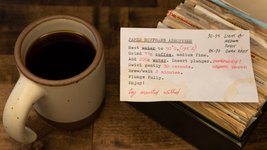Note Taking
The most natural implementation of any feature request is additive, attempting to leave all other elements of the design in place and simply inserting one new component: a new button in a UI or a new parameter to a function. As this process is repeated, the simplicity of a system is lost and complexity takes its place. This pattern is often... See more
Alex Gaynor • Why software ends up complex · Alex Gaynor
Note taking is building a relationship with a future version of yourself.
Dan Shipper • The End of Organizing - Superorganizers - Every
Over the last decade, we've seen "complex" design patterns evolve. The infinite canvas, chatbot interface, and even the command line have become omnipresent in today’s tools. Compared to bullet points, these patterns are more appealing: sleek, and playful to use. Interacting with an interface through the act of drawing, or chatting might be more... See more
Itay Dreyfus • #4 Roam Research — What Comes After a Renaissance?

The actual measures of productivity that might be useful range quite a bit:
- I did enough to not get fired.
- I did enough to get promoted.
- I did enough to get hired by a better firm.
- I solved a problem for a customer who was frustrated.
- I changed the system and now my peers are far more productive.
- I invented something that creates new possibilities and
PW 5: Measuring the right thing
Indeed Roam is very much inspired by a niche programming language called Clojure. Furthermore, it's built with it. It's a flexible, small syntax language imparting a plasticine feeling. One can achieve many things using a small amount of building blocks. Much like Roam.
Itay Dreyfus • #4 Roam Research — What Comes After a Renaissance?
I continue to journal most days, and occasionally find myself working to refine one concept or another among those notes.
But the original promise of Roam — that it would improve my thinking by helping me to build a knowledge base and discover new ideas — fizzled completely.
But the original promise of Roam — that it would improve my thinking by helping me to build a knowledge base and discover new ideas — fizzled completely.
Why note-taking apps don't make us smarter
Note-taking apps, simply put, are our best option for “bending” productivity to the ebb and flow of our days, and for managing the work-in-process inventory of ideas that represents our main asset as knowledge workers.
Tiago Forte • Bending the Curves of Productivity
I’ve been pondering this gap between one-shot and incremental information-finding interfaces in the context of knowledge tools recently. Text search boxes are easy to design and easy to add to apps. But I think their ease on developers may be leading us to ignore potential interface ideas that could let us discover better ideas, faster.